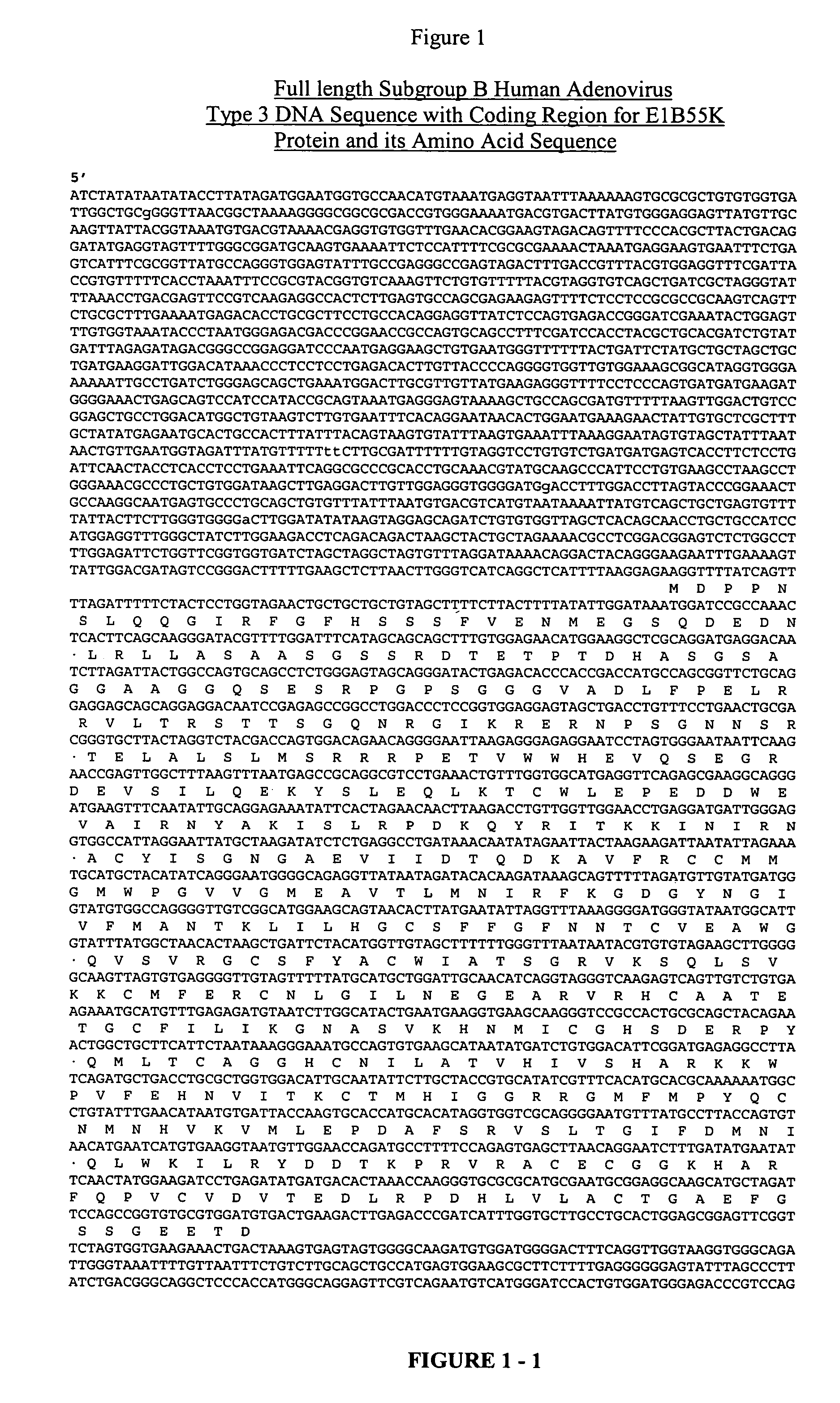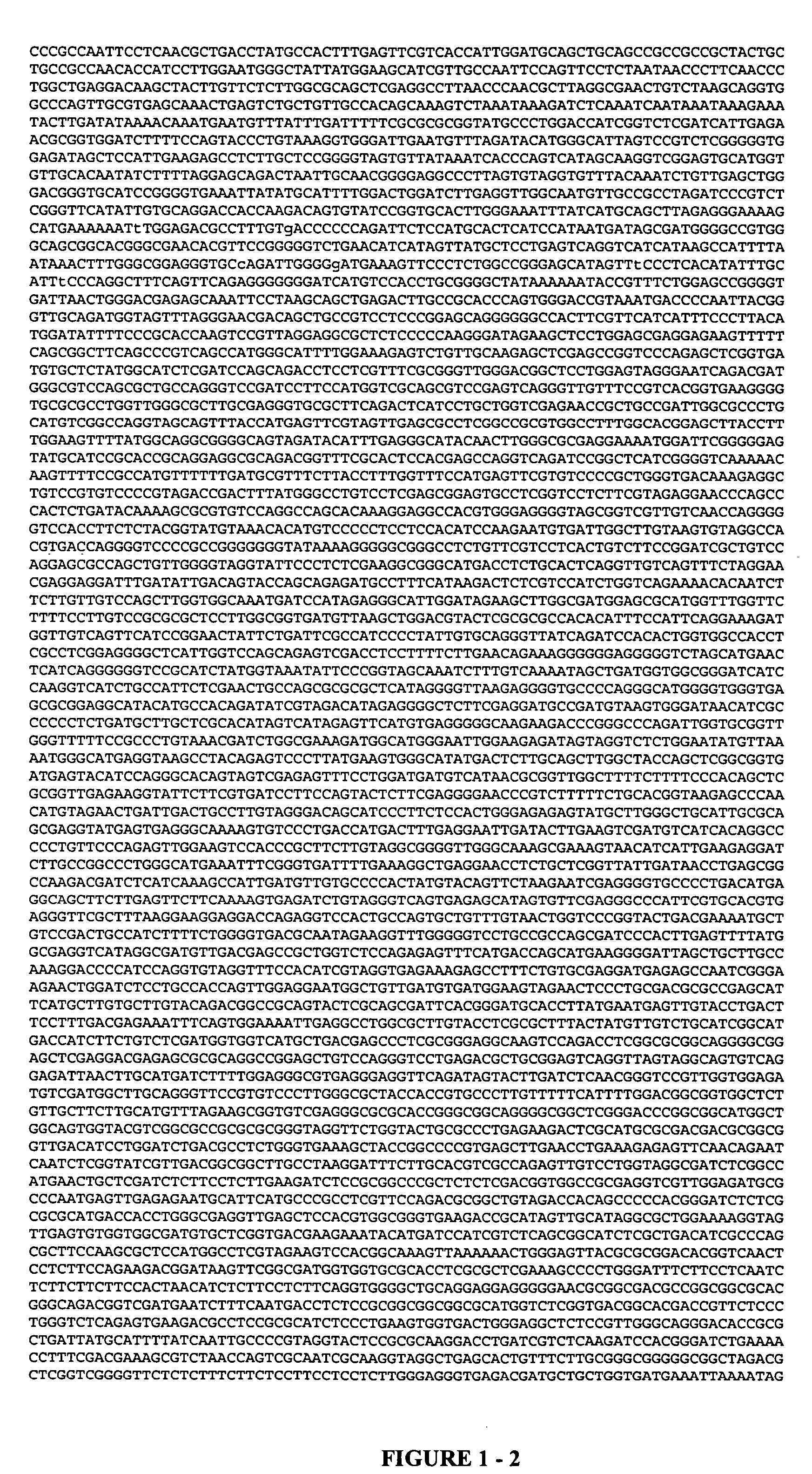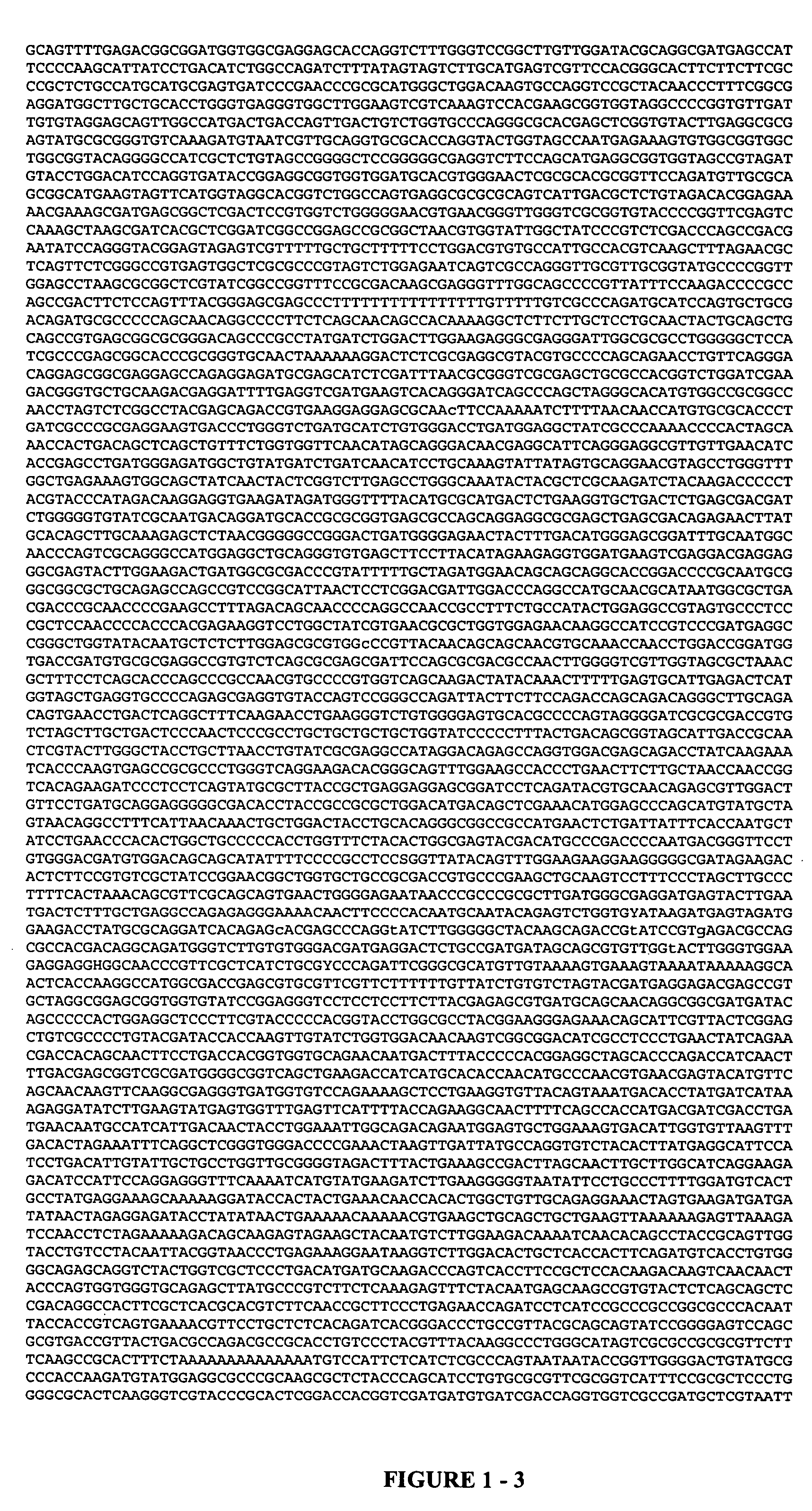Subgroup B adenoviral vectors for treating disease
a technology of adenovirus and subgroup b, which is applied in the direction of dsdna viruses, drug compositions, biocide, etc., can solve the problems of inability to express a replication phenotype, significant infectivity of these cells, and car in hepocytes
- Summary
- Abstract
- Description
- Claims
- Application Information
AI Technical Summary
Problems solved by technology
Method used
Image
Examples
example 1
Adenovirus 3 and 34 Genomic Sequences
[0101] Human subgroup B adenovirus types 3 and 34 (hereinafter also referred to as Ad3 or Ad 34, respectively) were obtained from the American Type Culture Collection (ATCC). The viruses were propagated in A549 cells, also available from the ATCC, and using standard infection and growth techniques. Both viruses were purified by cesium chloride gradient banding centrifugation.
[0102] Viral DNA was obtained from cesium chloride gradient-banded virus particles by lysing the virus particles in a solution consisting of: 10 mM Tris-HCl (pH8.0), SM EDTA, 0.6% SDS and 1.5 mg per ml of pronase (Sigma Corporation). The solution was at 37° C. Lysed particles were extracted twice with phenol / chloroform, and viral DNA was precipitated with ethanol. Purified viral DNAs were dissolved in distilled water and used for DNA sequencing.
[0103] Next, viral DNAs were subjected to limited digestion with Sau 3AI, followed by resolving the digested DNAs in a 1% agarose ...
example 2
Construction of E1B 55K Deleted Virus on Ad34 Backbone
[0105] Plasmid Construction
[0106] Vectors based on pGEM (Promega Corp.) were modified and used to clone, subclone the relevant nucleotide sequences. Plasmid construction was based on the fact that there is a unique NheI restriction site in the Ad34 genome at 6.5 KB from the left end. Plasmid construction began with the digest of the Ad34 genome (15 ug) with HindIII. Two fragments sized 2.2 Kb and 3.4 Kb were isolated on a 1% agarose gel and purified using Bio 101 Gene Clean Kit. The 2.2 Kb fragment was ligated into pGEM-7Z (Promega), that had been previously digested with HindIII. The construct was evaluated for the correct fragment and orientation by restriction mapping. This construct was called 2.2 / pGEM-7Z. Next, the HindIII site near the NheI site in the 2.2 / pGEM7Z construct was removed by digesting with NheI and ClaI, then filling in with Klenow and re-ligating. The first 1.4 Kb of the Ad34 genome, was generated by PCR (U....
PUM
| Property | Measurement | Unit |
|---|---|---|
| pH | aaaaa | aaaaa |
| lengths | aaaaa | aaaaa |
| ionic strength | aaaaa | aaaaa |
Abstract
Description
Claims
Application Information
 Login to View More
Login to View More - R&D
- Intellectual Property
- Life Sciences
- Materials
- Tech Scout
- Unparalleled Data Quality
- Higher Quality Content
- 60% Fewer Hallucinations
Browse by: Latest US Patents, China's latest patents, Technical Efficacy Thesaurus, Application Domain, Technology Topic, Popular Technical Reports.
© 2025 PatSnap. All rights reserved.Legal|Privacy policy|Modern Slavery Act Transparency Statement|Sitemap|About US| Contact US: help@patsnap.com



